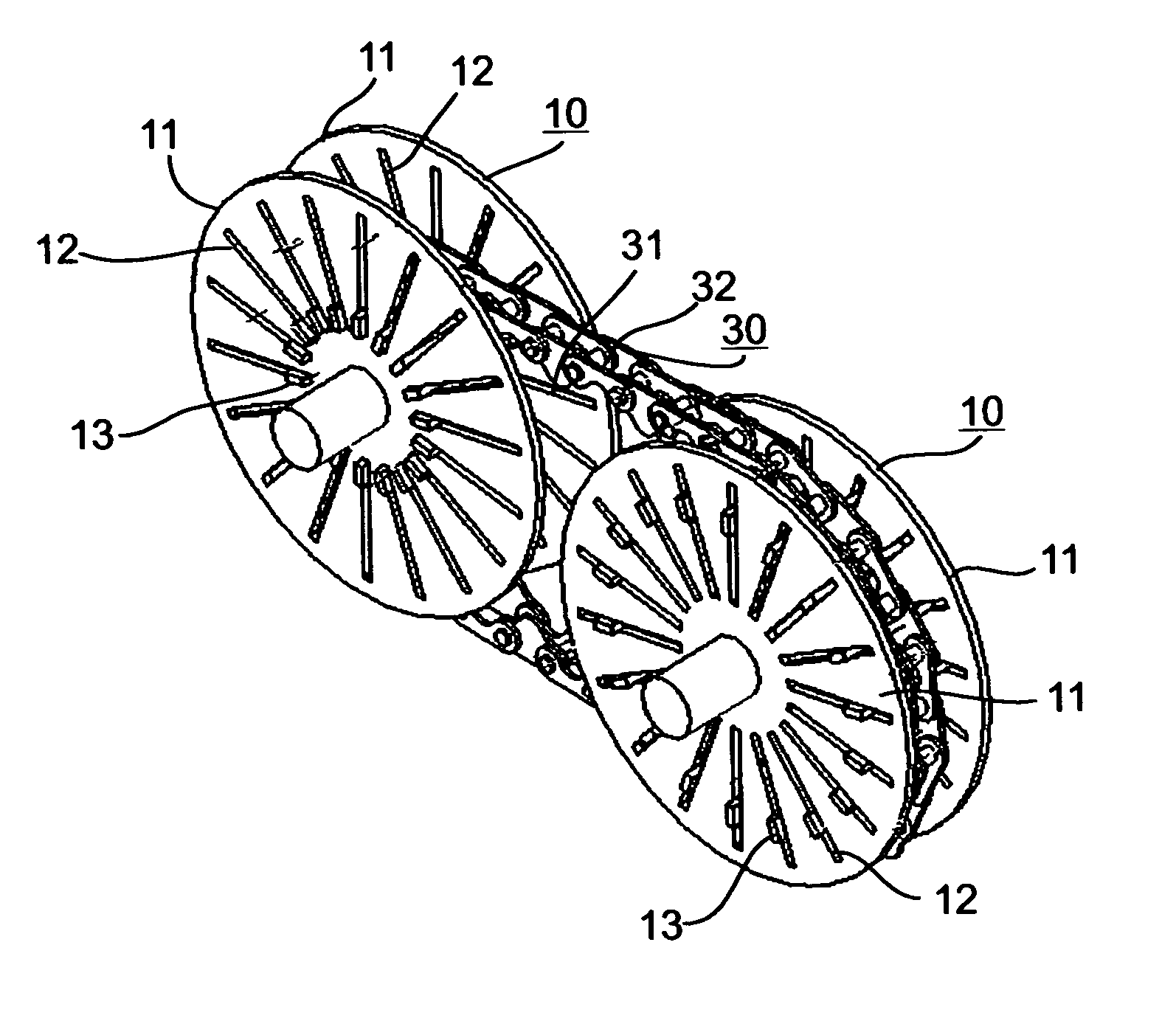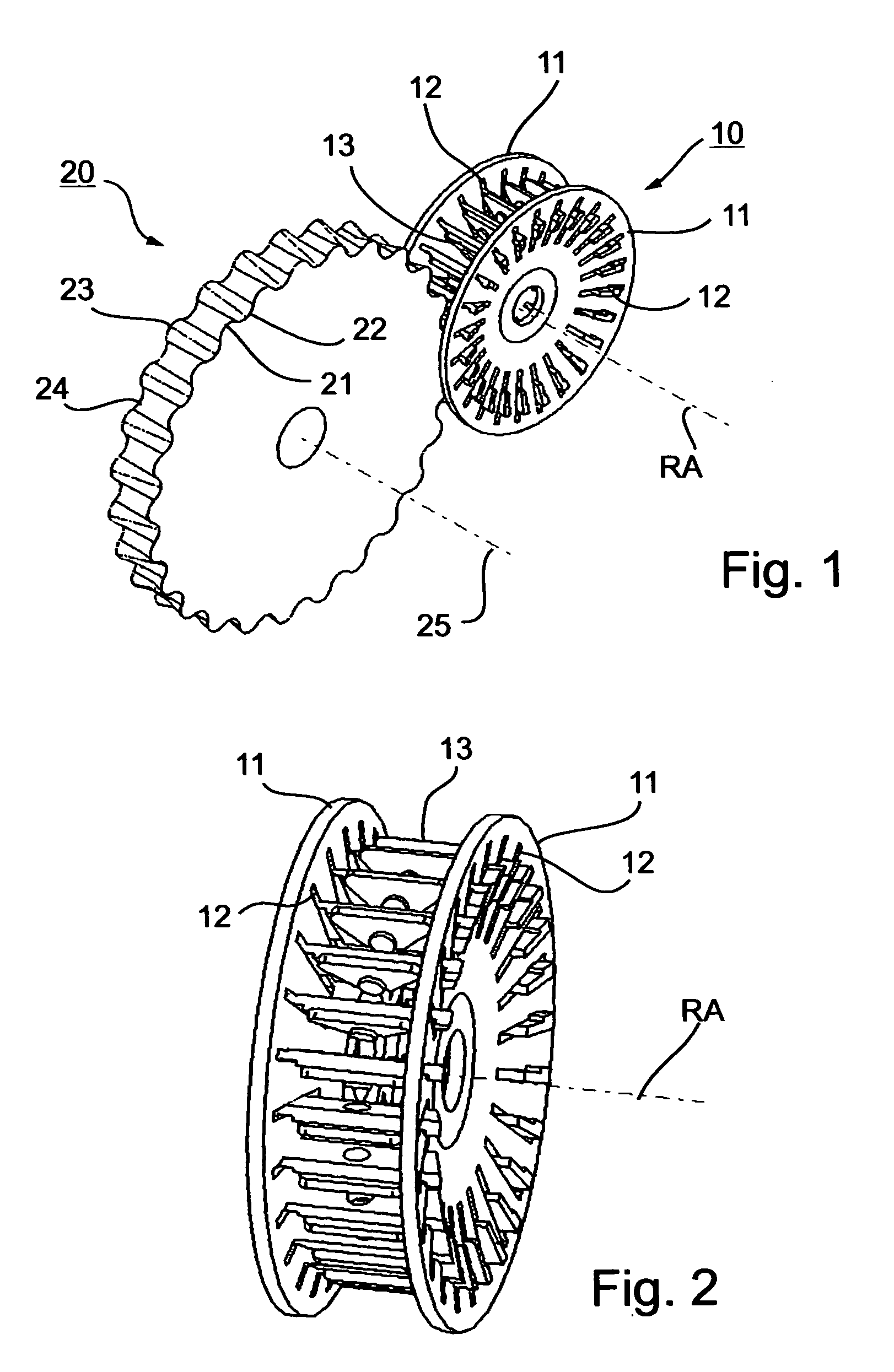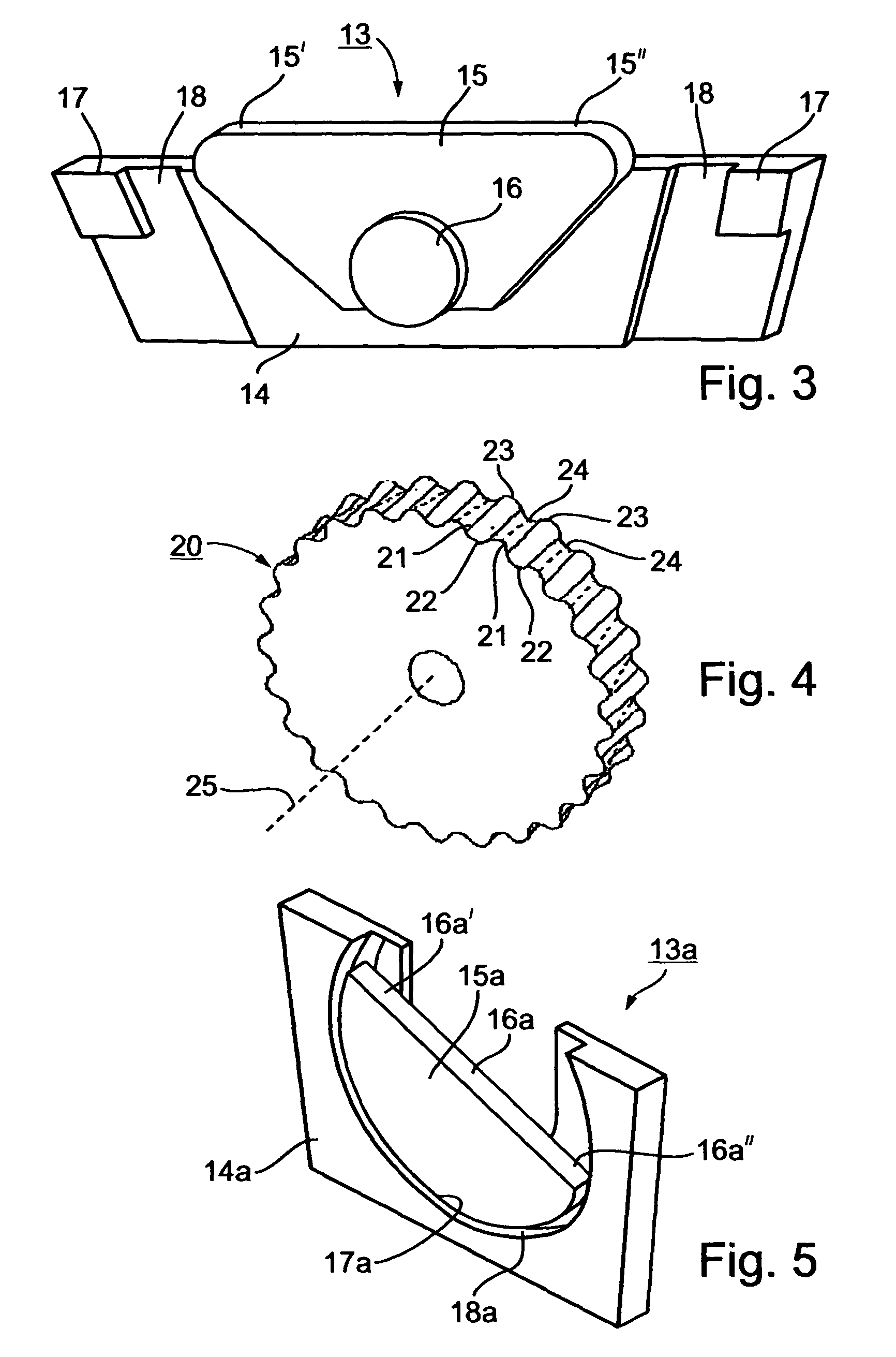Non-slip transmissions particularly useful as continuously-variable transmissions and transmission members thereof
a transmission and non-slip technology, applied in the direction of gearing, driving chains, hoisting equipments, etc., can solve the problems of continuous-variable transmissions, slippage between the contact surfaces, rapid wear of the contact surfaces, etc., and achieve low friction loss, high durability, and eliminate slippage
- Summary
- Abstract
- Description
- Claims
- Application Information
AI Technical Summary
Benefits of technology
Problems solved by technology
Method used
Image
Examples
Embodiment Construction
[0119]FIGS. 1-4 illustrate a continuously-variable transmission CVT constructed in accordance with the invention and including two rotary members, namely a variable-diameter toothed wheel 10 rotatable about rotary axis RA, and a fixed-diameter toothed wheel 20 rotatable about its rotary axis 25, parallel to rotary axis RA.
[0120]The variable-diameter toothed wheel 10 includes a pair of axially-spaced discs 11, 11, formed with a plurality of radially-extending slots 12, 12, receiving the opposite ends of an annular array of coupling elements 13.
[0121]The construction of each of the coupling elements 13 is more particularly illustrated in FIG. 3. It includes a mounting plate 14 having its opposite ends slidably received within slots 12, 12 of the wheel discs 11, 11. It also includes a contact plate 15 pivotally mounted at 16 to the mounting plate. The opposite ends of the mounting plate 14 are thickened, as shown at 17, to define tracks 18 to be slidably received within the slots 12, 1...
PUM
 Login to View More
Login to View More Abstract
Description
Claims
Application Information
 Login to View More
Login to View More - R&D
- Intellectual Property
- Life Sciences
- Materials
- Tech Scout
- Unparalleled Data Quality
- Higher Quality Content
- 60% Fewer Hallucinations
Browse by: Latest US Patents, China's latest patents, Technical Efficacy Thesaurus, Application Domain, Technology Topic, Popular Technical Reports.
© 2025 PatSnap. All rights reserved.Legal|Privacy policy|Modern Slavery Act Transparency Statement|Sitemap|About US| Contact US: help@patsnap.com



